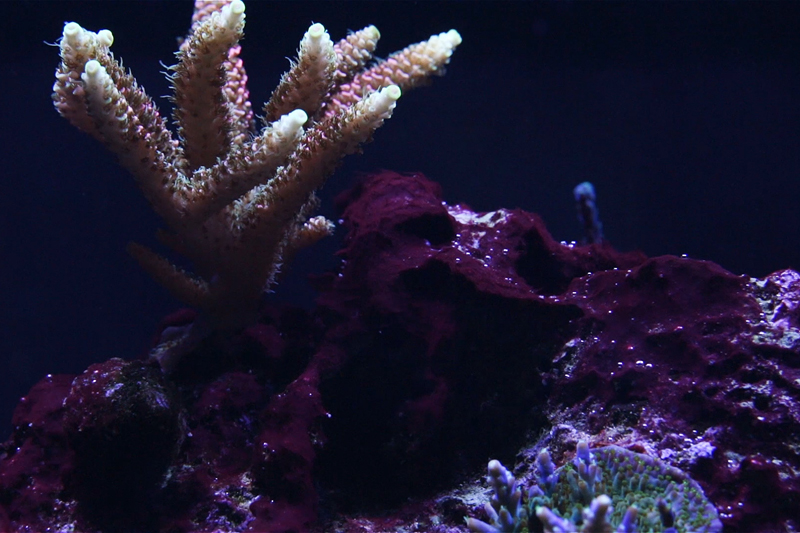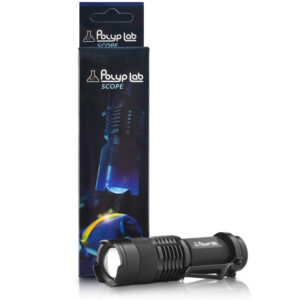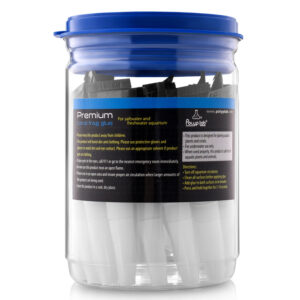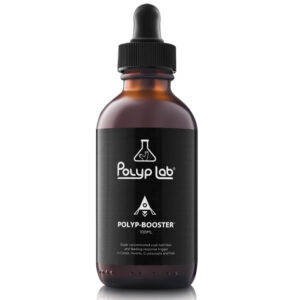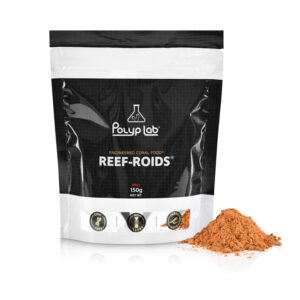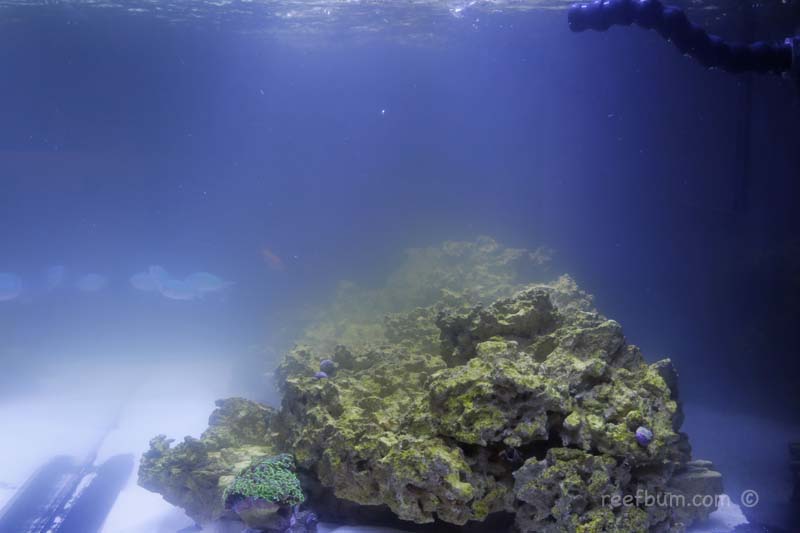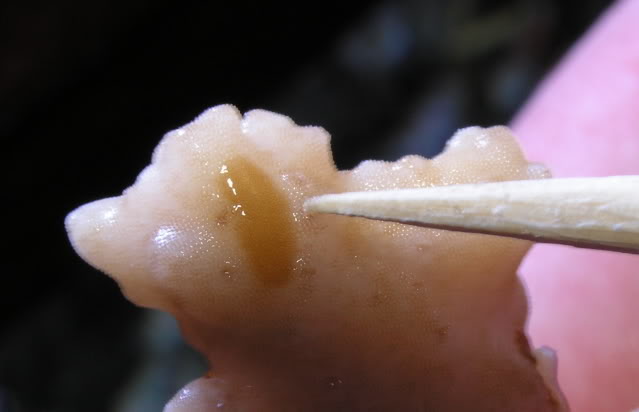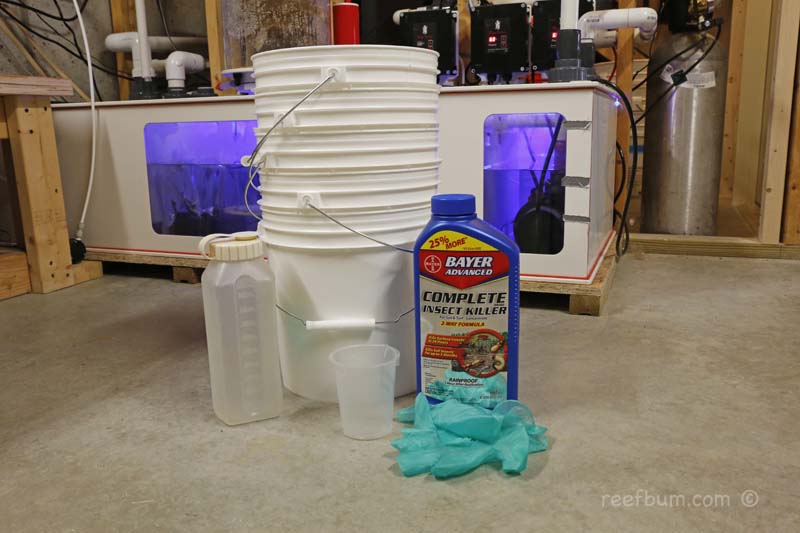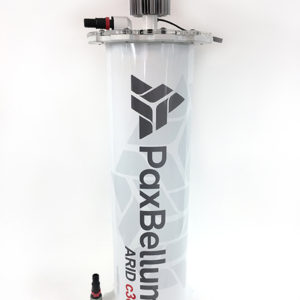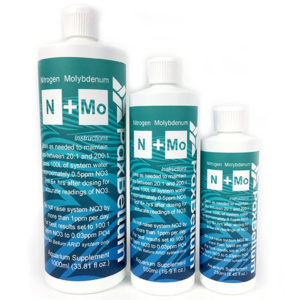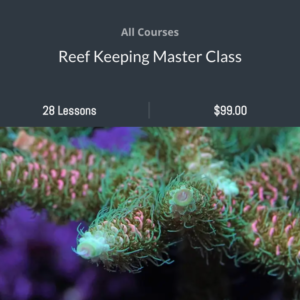What? Dosing nitrates to get rid of cyano? A common piece of advice when battling Cyanobacteria or cyano is to lower nutrients since cyano can be fueled by high phosphates or nitrates (cyano can also pop up due to elevated organics). So wouldn’t it be counter-intuitive to raise one of these elements? Let’s dig into this a bit. If both nitrates and phosphates are high then one can use Granular Ferric Oxide or GFO to lower phosphates and carbon dosing to lower nitrates. I used to run GFO on my reef tanks and it was certainly easy to use, but there were some downsides.
If used too aggressively GFO can shock corals and cause SPS to fade. Another downside with GFO is that it will not only bind phosphates but other important trace elements as well. These were the main reasons why I switched to an algae reactor, a natural way to control nutrients. When using an algae reactor, algae scrubber or refugium to remove both phosphates and nitrates you have to be mindful of one thing….you need enough of both of them for effective removal.
Dosing Nitrates & the Redfield Ratio
Nitrates and phosphates are consumed by bacteria in a 16:1 ratio, known as the Redfield Ratio, so if you have zero nitrates then your system is nitrate limited. If there is not enough nitrate then the bacteria can’t consume phosphate, causing it to rise.
In theory, adding nitrates via an additive will make it possible for the bacteria to consume phosphate and drive it down, a possible solution for beating back stubborn cyano. On the flip side, a tank with zero phosphates is phosphate limited, making it tough to remove nitrates. In this case you can dose phosphates. Dosing nutrients to eliminate cyano is not the only solution when a tank is either nitrate or phosphate limited. You can feed your fish more or even add more fish to increase the bio load.
Overall, cyano does need phosphate to grow and dosing a nitrogen source will allow the chaeto to take phosphate out of the water column, eventually lowering phosphate levels in the substrate as well. However, dosing both nitrates and phosphates without algae as an export mechanism could lead to phosphate accumulation in the substrate. For more information on the chemistry behind using algae for nutrient export, you can read this piece from Pax Bellum.
Additional Resources
If you would like some help with a new tank build, including help designing a custom aquarium, or help re-configuring your current setup then you can visit this page for more information. And if you are looking to add some equipment, I do sell GHL, Pax Bellum, Reef Octopus Calcium and Kalk Reactors and Royal Exclusiv products, including Dreamboxes, which is the equipment I use and recommend. I also sell Reef Brite metal halide and LED fixtures as well as Maxspect & IceCap Gyres.
As for additional insights and information, please explore my many other reef tank and SPS related articles as well as my YouTube channel. For an even deeper dive into reef tank care you can check out my Reef Keeping Master Class. This online course is an immersive and one of a kind educational tool designed to help reef aquarium hobbyists build and maintain a beautiful SPS reef tank. The course is a series of video presentations with some supplemental video from my YouTube channel. There are also quizzes to help students retain and understand the information presented in the course.
Need some frags…..I can help with that as well 🙂 Please visit my SPS Frag store to see what is available.

